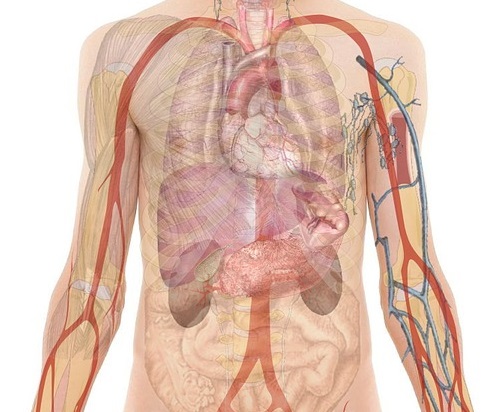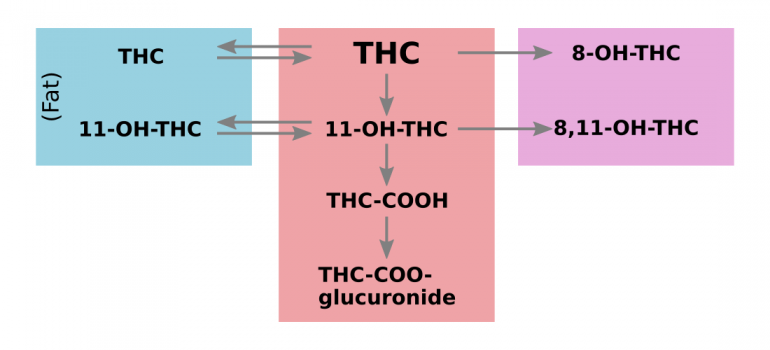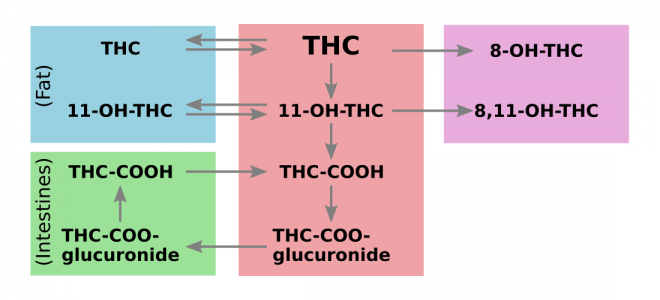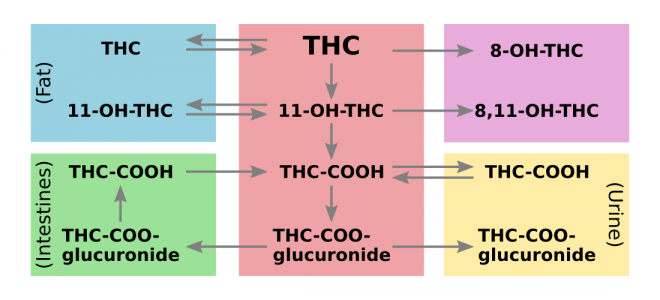
THC Metabolism & Elimination
Validated Methods For THC Detox
We understand that THC metabolism and elimination is complex. With so much inaccurate information on the internet, it may seem like scientists do not yet understand it. Nothing could be further from the truth. The metabolism and elimination of THC is more well studied than almost any other drug in the world.
This guide will explain everything you need to know about THC metabolism and elimination (in just 5 steps). It will also tell you why each of the 7 validated detox methods can reduce levels of THC or metabolites. These individual methods are the building blocks of our THC Detox Protocols.
The graphic below shows you a summary of how everything fits together. Lost? Don’t worry, we are going to build this up piece by piece.

1. The Main THC Metabolic Pathway

This is the main THC metabolic pathway, which contains 3 metabolites:
- 11-OH-THC is formed from THC by the CYP2C9 enzyme. It is also psychoactive.
- THC-COOH is also formed by the CYP2C9 enzyme.
- The final “glucuronide” metabolite is the primary one excreted into your urine and detected by tests. It is formed by UGT1A enzymes.
2. Alternate Metabolic Pathways

Besides the main metabolic pathway, there are “alternate” metabolic pathways.
The metabolites in these alternate pathways are excreted mostly in the feces and are not detected by urine tests.
The primary enzyme that sends THC and 11-OH-THC down these pathways is called CYP3A4.
CYP3A4 is “inducible”, meaning that certain molecules can cause your body to make more of it.
3. Fat Distribution

THC and 11-OH-THC are both extremely lipophilic, which means that they preferentially reside in fat.
In fact, only a very small percentage of these molecules are in your blood and available for metabolism or elimination at any given time. This is the reason that THC metabolites are detectable for so long.
THC-COOH and glucuronide metabolites are less lipophilic and are not stored in fat to a significant extent.
4. Enterohepatic Recirculation

There is another way that the THC-COOH and glucuronide metabolites stay in your body for longer. It is called “enterohepatic recirculation”.
The glucuronide metabolite is pumped into your bile, which is then released into your intestines after meals.
The glucuronide is converted back to THC-COOH by bacterial enzymes in your intestines. The THC-COOH is then reabsorbed, where the cycle can start again.
5. Urinary Elimination

The glucuronide metabolite is eliminated into your urine, where it can be detected by tests.
The THC-COOH metabolite can also be detected by tests, but typically there is a negligible amount found in the urine.
The reason for this is that it is reabsorbed in your kidneys during the process of urine creation. This reabsorption process may be promoted or inhibited by changing urine pH.
Final point: every metabolite in the main pathway is constantly replenished by the one above it.
- If you could magically remove all THC from your body right before a test, you would still fail it. It would take time for the “downstream” metabolites to be eliminated from your body.
- If you could magically remove all glucuronide metabolite from your body, you could immediately pass a test. But over time, it would be replenished by the “upstream” metabolites.
This guide wouldn’t be complete without mentioning some of the methods we evaluated that didn’t make the cut. Ultimately, if a method doesn’t alter one of the processes listed above, it is unlikely to work.

